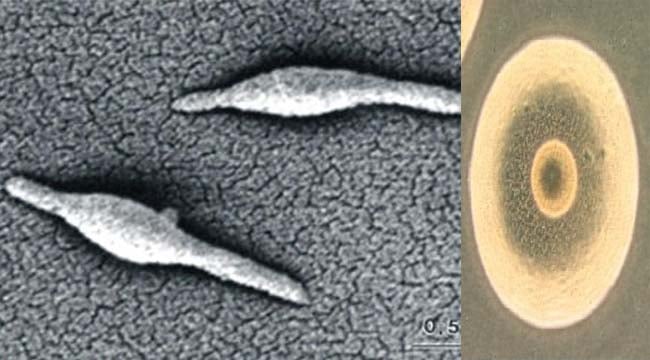Interesting Science Videos
Habitat of Mycoplasma pneumoniae
- They are found in the mucosa of upper respiratory tract (UTR) and urogenital tract of humans.
- Also found in oral cavity.
- They are also present in sewage, plants, animals, insects, humans and hot springs.
- They grow slowly than bacteria.
- They are self-replicating bacteria.
- They are atypical bacteria.
- They do not grow in the environment.
- They depends on the host for nutrient exchange and survival.
- They are parasitic bacterium.
- They require sterol for their nutrition.
- They usually divide by binary fission.

Morphology of Mycoplasma pneumoniae
- They lack rigid cell wall.
- They are small non-motile bacterium.
- They form fried egg shaped colonies.
- They are about 100-200 nm width and 1000-2000 nm in length.
- Some of them are spherical shaped (300-800 nm).
- They are pleomorphic (Able to change shape)
- They may be rod like, ring like, globoid or filamentous.
- They are ultra-filterable.
- They do not produce spores.
- Cells are surrounded by a triple layered lipo-proteinaceous unit membrane which is 10 nm thick.
- They are not easily examined by light microscope.
- Capsule are present to facilitate adherence to the host cell.
Genomes of Mycoplasma pneumoniae
- They are 816394 base pair long.
- GC Content: 40%.
- Codes for 700 proteins
- They have 677 open reading frames (ORF)
